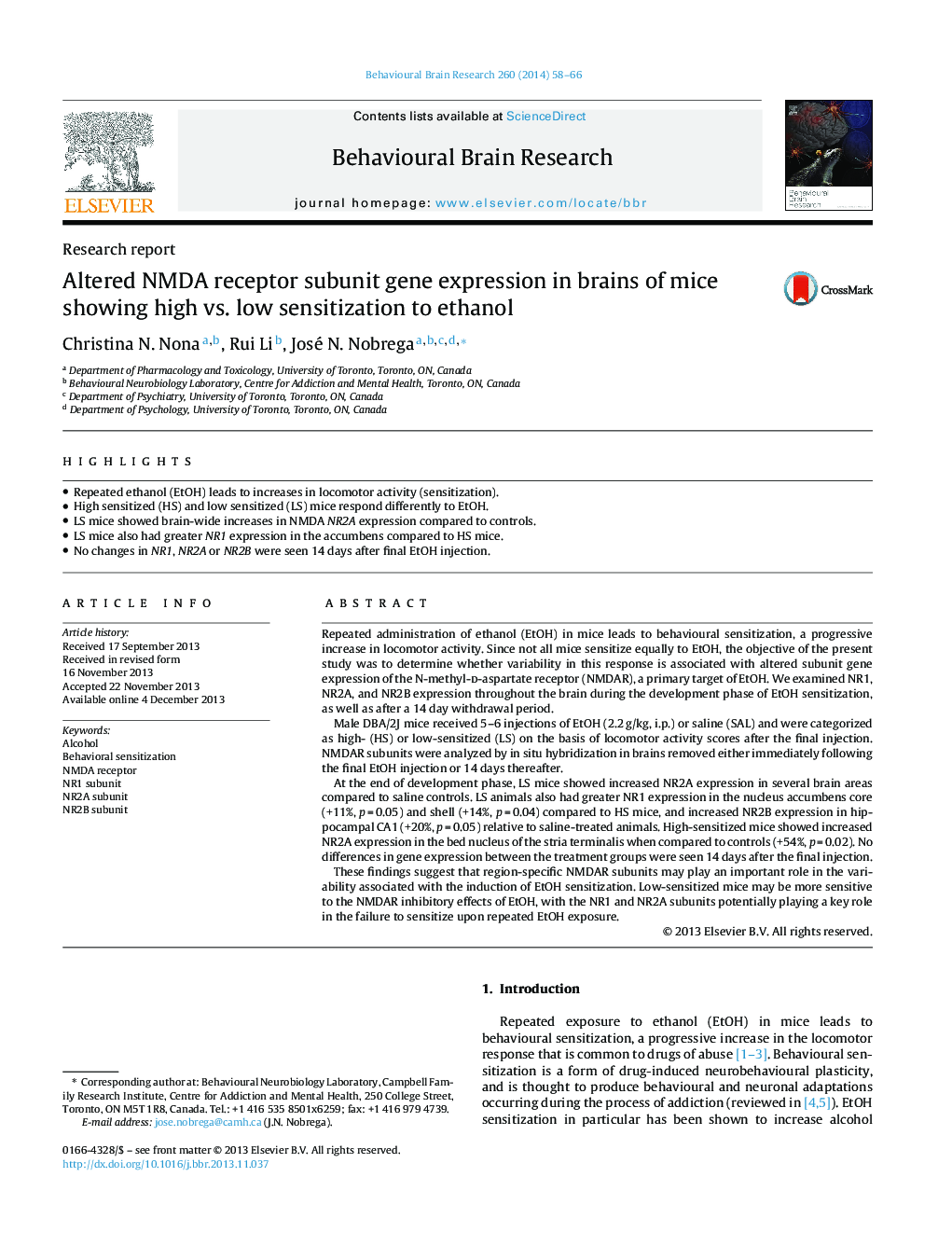| Article ID | Journal | Published Year | Pages | File Type |
|---|---|---|---|---|
| 4312571 | Behavioural Brain Research | 2014 | 9 Pages |
•Repeated ethanol (EtOH) leads to increases in locomotor activity (sensitization).•High sensitized (HS) and low sensitized (LS) mice respond differently to EtOH.•LS mice showed brain-wide increases in NMDA NR2A expression compared to controls.•LS mice also had greater NR1 expression in the accumbens compared to HS mice.•No changes in NR1, NR2A or NR2B were seen 14 days after final EtOH injection.
Repeated administration of ethanol (EtOH) in mice leads to behavioural sensitization, a progressive increase in locomotor activity. Since not all mice sensitize equally to EtOH, the objective of the present study was to determine whether variability in this response is associated with altered subunit gene expression of the N-methyl-d-aspartate receptor (NMDAR), a primary target of EtOH. We examined NR1, NR2A, and NR2B expression throughout the brain during the development phase of EtOH sensitization, as well as after a 14 day withdrawal period.Male DBA/2J mice received 5–6 injections of EtOH (2.2 g/kg, i.p.) or saline (SAL) and were categorized as high- (HS) or low-sensitized (LS) on the basis of locomotor activity scores after the final injection. NMDAR subunits were analyzed by in situ hybridization in brains removed either immediately following the final EtOH injection or 14 days thereafter.At the end of development phase, LS mice showed increased NR2A expression in several brain areas compared to saline controls. LS animals also had greater NR1 expression in the nucleus accumbens core (+11%, p = 0.05) and shell (+14%, p = 0.04) compared to HS mice, and increased NR2B expression in hippocampal CA1 (+20%, p = 0.05) relative to saline-treated animals. High-sensitized mice showed increased NR2A expression in the bed nucleus of the stria terminalis when compared to controls (+54%, p = 0.02). No differences in gene expression between the treatment groups were seen 14 days after the final injection.These findings suggest that region-specific NMDAR subunits may play an important role in the variability associated with the induction of EtOH sensitization. Low-sensitized mice may be more sensitive to the NMDAR inhibitory effects of EtOH, with the NR1 and NR2A subunits potentially playing a key role in the failure to sensitize upon repeated EtOH exposure.
